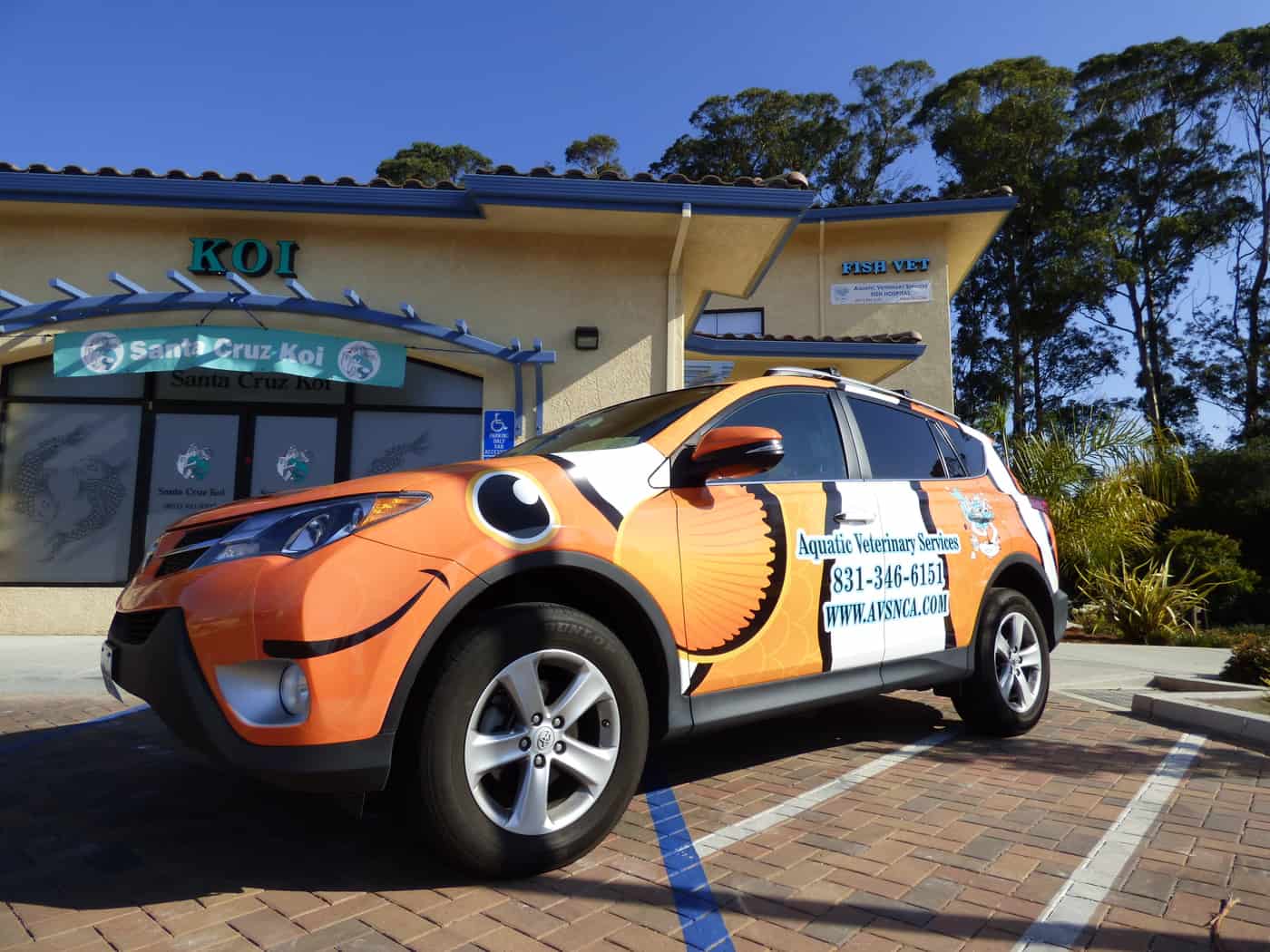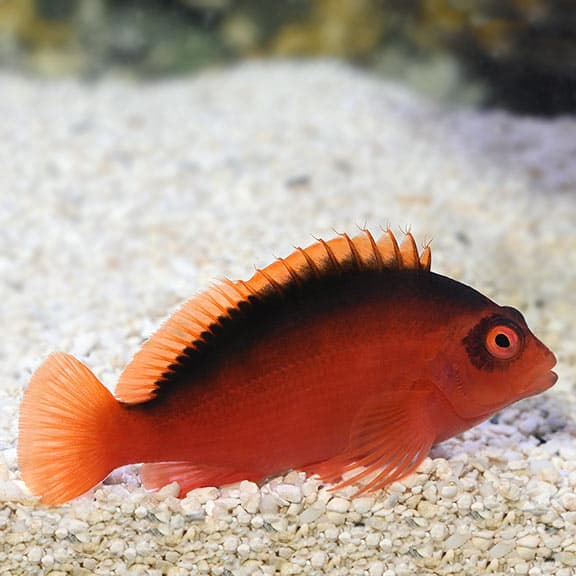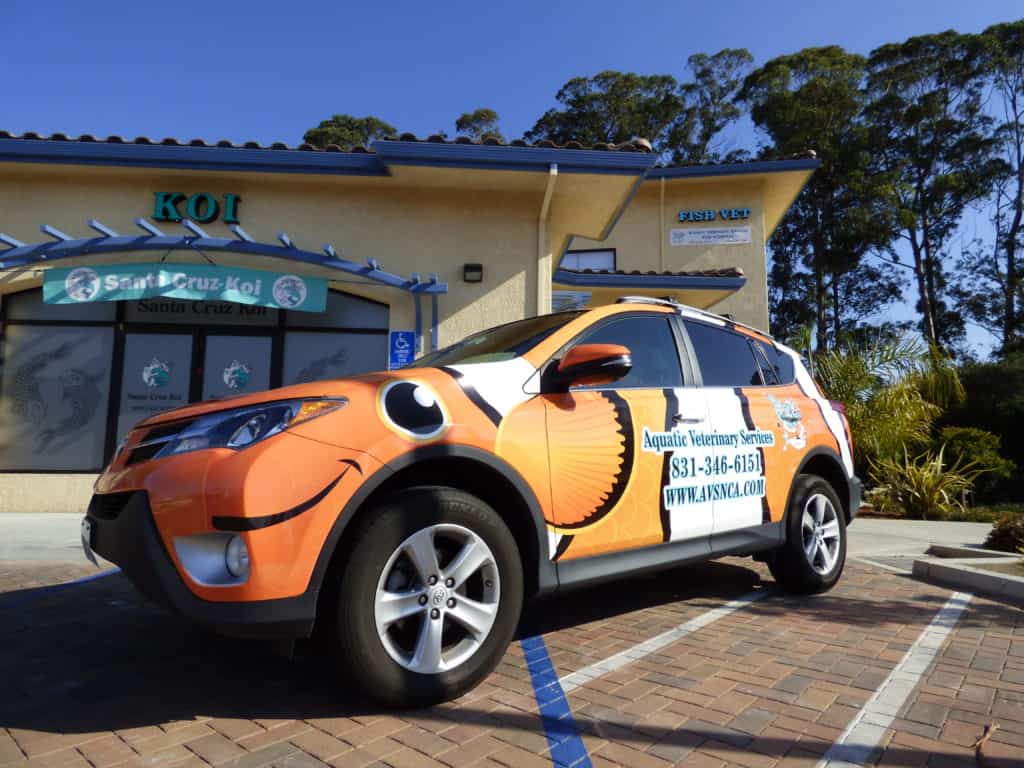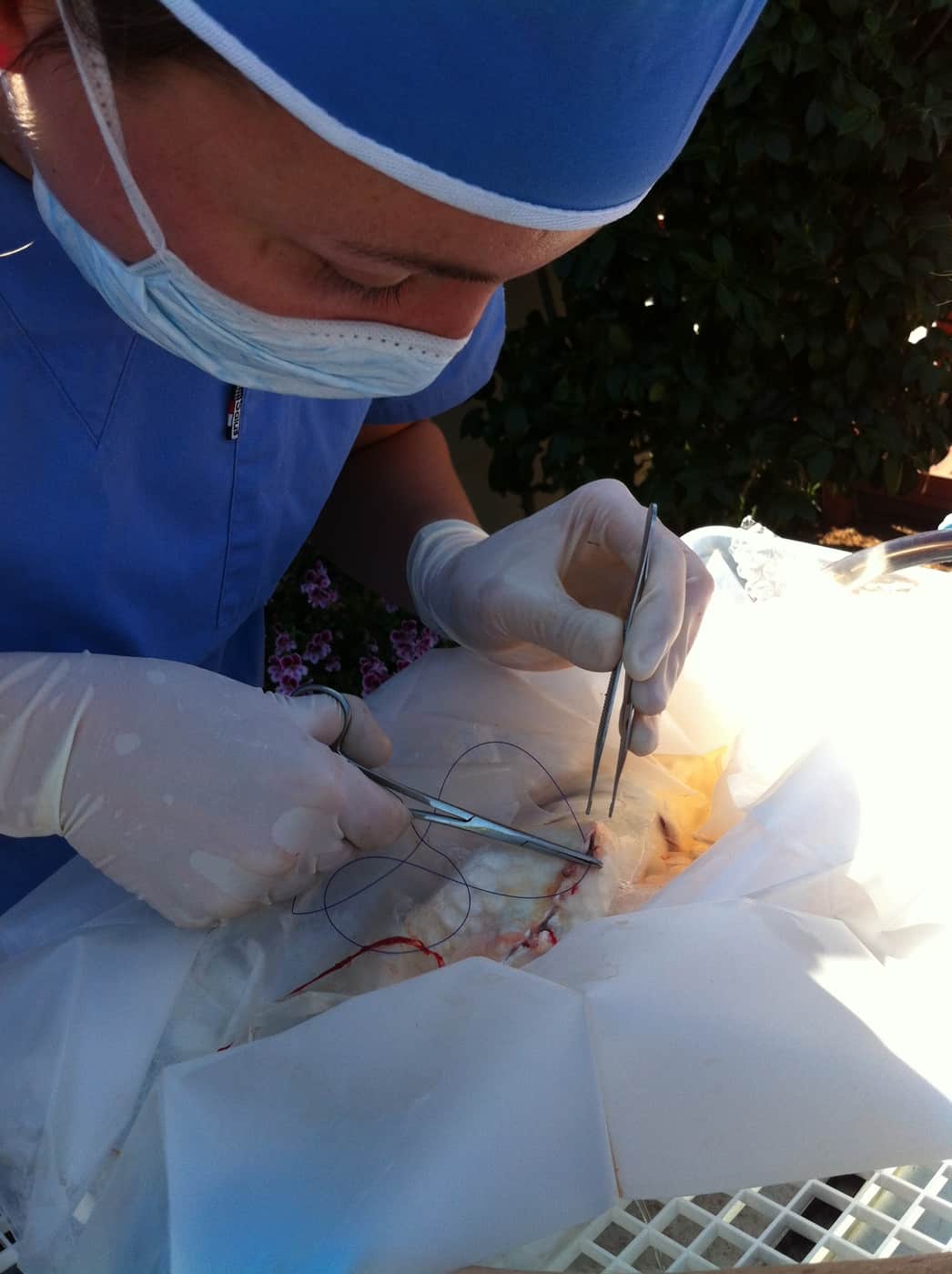 One of the most common questions our veterinary gets asked is, “what does the typical day of the aquatic veterinarian look like?” Even in the traditional small animal practice, cases and patients vary daily, but for a traveling all-fish veterinarian, the variety increases exponentially. Our chief veterinarian’s day varies widely, taking into account different species, setups, cases, driving and the tasks involved. Since we know professional help for fish is so scattered with questionable quality, our staff strives to help as many fish owners as we can. Let’s take an example of two days our veterinarian had a few weeks ago.
One of the most common questions our veterinary gets asked is, “what does the typical day of the aquatic veterinarian look like?” Even in the traditional small animal practice, cases and patients vary daily, but for a traveling all-fish veterinarian, the variety increases exponentially. Our chief veterinarian’s day varies widely, taking into account different species, setups, cases, driving and the tasks involved. Since we know professional help for fish is so scattered with questionable quality, our staff strives to help as many fish owners as we can. Let’s take an example of two days our veterinarian had a few weeks ago.
Typical Day 1:
- Starting at 7am, our vet drove from our home office to a property in Carmel to administer parasite medication to two 5,000 gallon koi ponds. The veterinarian had been at the property a few days before for their annual spring check up and found a severe Trichodina infestation. The owners were away, however, and the fish needed immediate treatment since there had already been some deaths. A third pond on the property was not infected and therefore did not require mediation. When the owners returned in a few days, they would start flushing the medication out of their system. (Total miles: 42)
- After a quick stop over at the office to check in with our hospital manager, the vet was off to Moraga in order to check a pond of koi in a 6,000 gallon pond. This pond has a tricky layout and requires the use of a seine net to catch any fish. Unfortunately, this pond has had a rough bout of disease over the past year and a half. A few fish have developed thick, ulcerated growths around their mouths and many have died. The newest fish showing signs was cleaned and medicated. And although a few parasites were noted, the owner elected to have the fish not be treated at this time. When ponds are coming through the spring, the fishes’ immune system can lag behind the fast-reproducing parasites and bacteria. As the weather warms, their immune system usually can catch up, but only if parasite loads are not too high. With this particular pond, the vet felt comfortable leaving the fish to be medicated at the discretion of the owner. (Total miles: 127)
- From there, and through early afternoon Bay Bridge traffic, the vet continued on to Montara to deliver medication for a saltwater tank she had seen the previous day. After diagnosing
 marine Ich (Cryptocaryon) and working with the owner to craft a treatment protocol, it was necessary to move the fish out of their tank, away from the corals and invertebrates, and treat them separately. In addition to dropping off the medication, the vet was responsible for catching the fish and moving them to their new hospital tank. The clownfish from the previous day was the easiest to catch and probably the most heavily infested. Over 2 hours, the wrasse, tang, foxface, damsel and cardinal fish joined their friend in the new hospital tank. However, the hawkfish was able to elude the vet with assistance from both owners. Rather than stress this fish out more, and considering the parasite was already affecting his gill function, the owners decided to lure the fish out and catch him later that evening. 6 out of 7 fish with two large coral inserts would be the best the vet could do. Unfortunately, not everything goes to plan some times. Ending the day, the vet headed home to type up notes and prep for the next day. (Total miles: 97)
marine Ich (Cryptocaryon) and working with the owner to craft a treatment protocol, it was necessary to move the fish out of their tank, away from the corals and invertebrates, and treat them separately. In addition to dropping off the medication, the vet was responsible for catching the fish and moving them to their new hospital tank. The clownfish from the previous day was the easiest to catch and probably the most heavily infested. Over 2 hours, the wrasse, tang, foxface, damsel and cardinal fish joined their friend in the new hospital tank. However, the hawkfish was able to elude the vet with assistance from both owners. Rather than stress this fish out more, and considering the parasite was already affecting his gill function, the owners decided to lure the fish out and catch him later that evening. 6 out of 7 fish with two large coral inserts would be the best the vet could do. Unfortunately, not everything goes to plan some times. Ending the day, the vet headed home to type up notes and prep for the next day. (Total miles: 97)
Typical Day 2:
- The vet’s second typical day starts in Santa Cruz with a Spring Pond Health Check. This is a typical appointment where the pond or tank is given a regular check up, including water quality testing and a few fish physicals under sedation. With this pond, two of the koi were sporting unique bulges. One grey koi had a large bulge over her middle, while another white koi had one on his underside just cranial to his anus. With the rest of the pond checking out healthy, our vet employed an ultrasound to check out the inner workings of the two koi. It was discovered
Dr. Sanders performing surgery on a koi that the grey koi had a large pocket of air right next to his skin, causing the bulge. Unfortunately, ultrasound does not work well on air, so a radiograph or x-ray was discussed. The owner declined. The white koi ended up with a pocket of irregular tissue and fluid indicating a tumor. Tumors of this nature are common in koi. The owner elected not to do surgery. As long as the fish is swimming, eating and acting like a normal fish, we can leave them in the pond to enjoy the most of their life. (Total miles: 5)
- From there, the vet journeyed over route 17 to San Jose to see a fancy goldfish with a BIG anchor worm infestation. (Did you know we travel over 17 almost every day?) While bent over the family dinner table, the vet removed over 60 worms from the fish’s body and oral cavity. A plan was made with the owner to clean out his tank to get all the juveniles with medication to be sent later. Unfortunately, for this little fish, he passed away a few days later. Anchor worms, especially those big enough to see, reproduce extremely quickly and this fish had been fighting them since he arrived at the home 3 months prior. We are very sad to hear about his passing. (Total miles: 33)
- On the way back to the office, the vet stopped off at a home in Ben Lomond to see a tank of 19-year-old goldfish. About 2 years prior, one of the fish developed neurologic issues due to severe ammonia levels. His spine was bent and he was unable to swim. Through lots of careful care, this fish recovered fully and has been able to swim about his tank like a normal fish. He has some neurologic issues remaining, but he is a remarkable little fish. Now, it’s his friend that is sick. His tankmate, who showed no signs secondary to the ammonia event, has developed skin edema, commonly called dropsy. As discussed in previous posts, dropsy is a physical manifestation of kidney disease. Finding nothing wrong with the water, the fish was started on antimicrobial therapy. We found that the owner had been feeding a can of flakes that were very old. As fish flakes are exposed to air, they lose their water-soluble vitamins, including vitamin C. Without adequate vitamin support, fish can get sick much easier, which is probably what happened in this case. A week later, the fish completed the antimicrobial therapy and is looking forward to a new diet. (Total miles: 35)
- In between our first and second appointments, we were contacted by one of our clients that he had found a fish dead in his pond that morning. Worried about the safety of the rest of the fish in his pond, he saved the body and was able to get it to our hospital. On the way to the hospital to check out the dead fish, the vet stopped off at his pond to check the rest of the fish. After the water and all fish checked out okay, the vet made it back to the office for the necropsy. The poor, dead koi had suffered from a severe infection in his swim bladder. The swim bladder itself had ruptured and leaked pus all throughout the coelomic cavity. This bacteria the attacked the other organs and the fish passed away. Although sad for the loss of the fish, it does not suggest that this fish passed his disease on to any other fish in the pond. There were likely no clinical signs other than possibly a slight negative buoyancy. Since the pond is only 3 feet deep at the center, the owner may to have noticed anything amiss. (Total miles: 26)
And so concludes two typical days on the road with our veterinarian. In a total of 365 miles, our vet had the variety of fish issues and therapies. Working in the veterinary field is a variety in itself, but adding fish creates a whole new dimension. We will continue to work hard to serve all fish owners and enthusiasts anywhere we can.



Boy! That was so interesting..I forwarded to Kevin so he could read it too! Can’t wait to see you! Joan
Sent from my iPhone
>
Pingback: Use These Expert Tips For Becoming An Aquatic Veterinarian | A Touch of Business.com